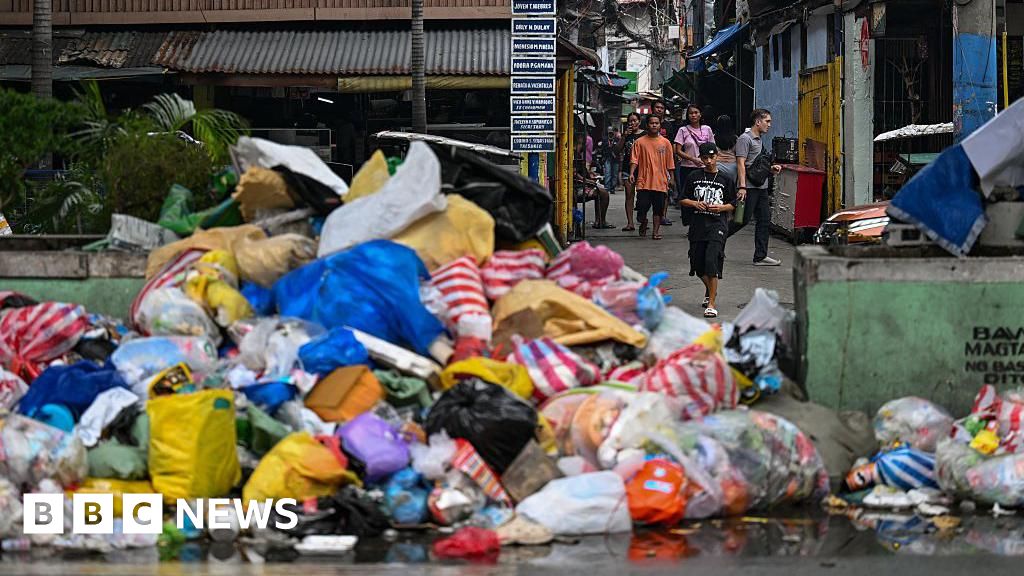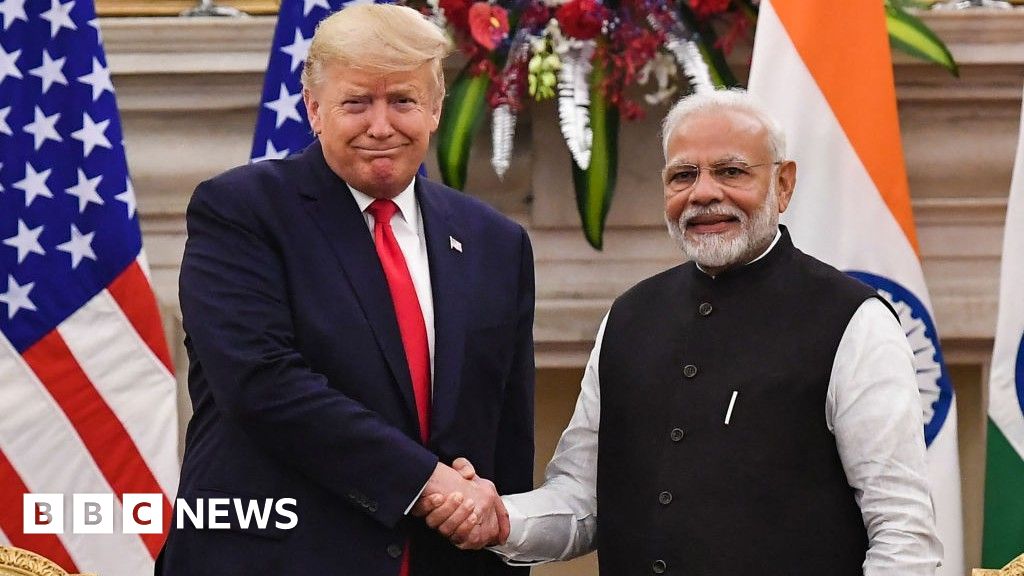Xi Jinping has been preparing for this moment for years.
In April 2020, long before President Trump launched a trade war that would shake the global economy, China’s top leader held a meeting with senior Communist Party officials and laid out his vision for turning the tables on the United States in a confrontation.
Tensions between his government and the first Trump administration had been simmering over an earlier round of tariffs and technology restrictions. Things got worse after the emergence of Covid, which ground global trade to a halt and exposed how much the United States, and the rest of the world, needed China for everything from surgical masks to pain medicines.
Faced with Washington’s concerns about the trade imbalance, China could have opened its economy to more foreign companies, as it had pledged to do decades ago. It could have bought more American airplanes, crude oil and soybeans, as its officials had promised Mr. Trump during trade talks. It could have stopped subsidizing factories and state-owned companies that made steel and solar panels so cheaply that many American manufacturers went out of business.
Instead, Mr. Xi chose an aggressive course of action.
Chinese leaders must “tighten international production chains’ dependence on our country, forming a powerful capacity to counter and deter foreign parties from artificially disrupting supplies” to China, Mr. Xi said in his speech to the Central Financial and Economic Affairs Commission in 2020.
Put simply: China should dominate supplies of things the world needs, to make its adversaries think twice about using tariffs or trying to cut China off.
In the years since, Mr. Xi has ramped up exports and deepened China’s position as the world’s leading base for manufacturing, in part by directing the central bank to lend nearly $2 billion to industrial borrowers over the past four years. He has also introduced new weapons of economic warfare to the country’s arsenal: export controls, antimonopoly laws and blacklists for hitting back at American companies.
So when the current Trump administration slapped huge tariffs on Chinese goods, China was able to go on the offensive. Besides retaliating with its own taxes, it imposed export restrictions on a wide range of critical minerals and magnets, the global supply of which China had cornered. Such minerals are essential for assembling everything from cars and drones to robots and missiles.
In the United States, the looming threat of empty store shelves and higher consumer prices is putting pressure on the Trump administration. The prices of some critical minerals have tripled since China unveiled its curbs, according to Argus Media, a London commodities research firm.
“It’s about flipping the leverage so that the world is reliant on China, and China is reliant on no one. It is a reversal of what Xi has been so irritated about, which is that China was so dependent on the West,” said Kirsten Asdal, a former intelligence adviser at the U.S. Department of Defense who now heads a China-focused consultancy firm, Asdal Advisory.
China still relies on the West for many advanced technologies like high-end semiconductors and aircraft engines. But its willingness to weaponize the supply chain may be one of the starkest examples of how Mr. Xi is redefining China’s relationship with the world and challenging the supremacy of the United States like no Chinese leader before him.
Making the World Choose Sides
Even though they are now starting talks that American officials say are aimed at de-escalating tensions, the two nations seem set on a no-holds-barred competition, particularly over crucial technologies that will shape the future, like artificial intelligence.
Their rivalry may start cleaving the world into competing spheres of influence. With the United States pushing other countries to restrict trade with China, and Beijing warning that it will punish nations that do so, the pressure to choose sides is mounting.
“China will use any and all tools at its disposal to cause pain and impose costs on the U.S. and any country that aligns with America,” said Evan Medeiros, a professor of Asian studies at Georgetown University who was an Asia adviser to President Barack Obama.
“The entire world,” Mr. Medeiros continued, “is about to learn the answer to a very important question: how reliant are we on trade with China and how much is it worth to us?”
Already, the Trump administration has shown that it cannot completely sever trade ties with Beijing. It exempted Chinese smartphones, semiconductors and other electronics from some of its tariffs. Mr. Trump also walked back tariffs on carmakers. China, too, has quietly indicated that it might exclude some semiconductors, lifesaving drugs and other health care products from its 125 percent tariffs on American goods.
Still, the barrage of tariffs strikes at the heart of China’s growth engine. Exports have been one of the only bright spots in an economy badly weakened by a property crisis and sagging consumer confidence. If the trade war drags on, it could result in millions of lost jobs in China, analysts estimate.
‘Never Kneel Down!’
Mr. Xi has said for years that the United States is bent on thwarting China’s rise, and the trade war appears to have validated his warnings.
He seems more inclined than ever to flex China’s muscles, analysts say, viewing the trade fight as a test of his authority as the most powerful Chinese leader since Mao Zedong. And his strategy reflects his perception that China is no longer weaker than the United States.
When he came to power in 2012, Mr. Xi pledged to pursue “the great renewal of the Chinese nation.” That ambition is at the core of the myth created around Mr. Xi: that he is a transformative figure restoring China’s glory, reversing a century of humiliation by foreign powers.
To accomplish his goals, Mr. Xi changed the rules to let himself stay in power indefinitely. He has made national security an all-of-society priority. He poured money into strategic industries, like semiconductors, that he thinks will help China better compete with the United States.
China has expanded its dominance in lithium-ion batteries used to power electric vehicles, cutting-edge robots for manufacturing, solar panels and wind turbines. Experts say China is also catching up with the United States in artificial intelligence, considered the battlefront of the next industrial revolution.
Mr. Xi also tightened his grip over China’s vast propaganda apparatus, which has ramped up in recent weeks to rally the public for a protracted “struggle.” The Foreign Ministry posted a video about the trade conflict on social media titled “Never Kneel Down!”
“The trade war is the ultimate validation that Western hostile forces are trying to contain, suppress and encircle China,” Ms. Asdal said. “Xi is saying, ‘We have to be man enough and strong enough to fight back.’”
Even if Mr. Xi ends up having to back down first, he could spin a tactical retreat as a win over Mr. Trump.
“This concentration of authority allows the Chinese leader to make sweeping policy decisions unchallenged — and to reverse course just as swiftly,” Zongyuan Zoe Liu, a fellow at the Council on Foreign Relations, wrote in a recent article for Foreign Affairs magazine.
The Costs to China
It is not clear that Mr. Xi’s long-term strategy will make China strong enough to overtake the United States as the top superpower. The focus on critical technologies and economic self-reliance has worsened frictions with China’s trading partners, and it comes at a cost to many Chinese households.
American leaders used to say that if China expanded its economic links to the West, it would gradually move toward political liberalization and a full embrace of free markets. But China advanced on its own terms, blending its one-party authoritarian system with capitalism and growing richer without losing political control.
Mr. Xi doubled down on that model, directing more capital to state-owned enterprises and banks to ensure the Communist Party had even more say over the economy’s direction. Entrepreneurs were once given space to grow, but under Mr. Xi, officials dictate which industries thrive and which go bust. A more open economy, driven by market demand and not political mandate, could have expanded the ranks, and the influence, of China’s businesses and middle-class consumers.
But that might have posed a challenge to the party’s control over society.
“This is not an economy a statist government desires, and this is why underconsumption has long been recognized as a problem, even at the highest level of the government,” said Yasheng Huang, an expert on the Chinese economy at the Massachusetts Institute of Technology Sloan School of Management. But “there have not been comparable reforms,” he added.
Experts have long argued that spending on social welfare would make China’s economy more balanced and less vulnerable to the West. Chinese economists have urged the government to invest in hospitals and pensions, and to help the hundreds of millions of city-dwelling rural migrants qualify for urban benefits. Such steps are seen as crucial for encouraging ordinary Chinese citizens to save less and spend more, contributing more to the country’s growth.
Some experts are even questioning whether Mr. Xi should be challenging the United States so aggressively, rather than following the famous dictum of an earlier top leader, Deng Xiaoping: “Hide your strength, bide your time.”
“China has become so ambitious without reaching superpower status yet,” said Shen Dingli, a Shanghai-based scholar who focuses on U.S.-China ties.
Mr. Shen cited Beijing’s expansive claims in the South China Sea; the erosion of Hong Kong’s autonomy; and the flood of Chinese exports that makes it hard for other countries to compete in trade. Taken together, they have alienated much of the world, contributing to what amounts to a reckoning for Mr. Xi.
China once had a “favorable external environment” for developing as a nation, but it has been “deteriorating,” Mr. Shen said. “It’s very regrettable.”
Daisuke Wakabayashi contributed reporting from Seoul and Berry Wang and Joy Dong from Hong Kong.
Source link













